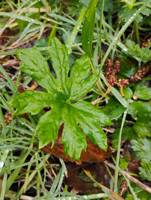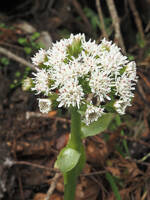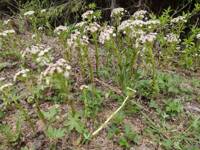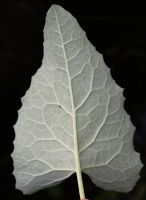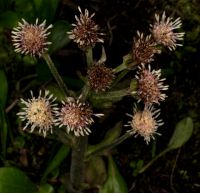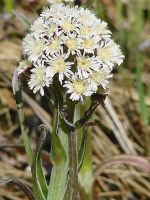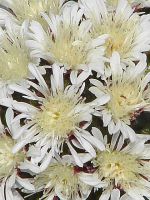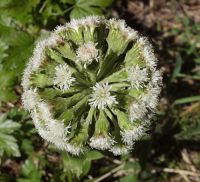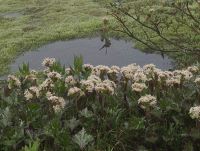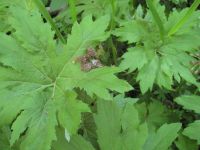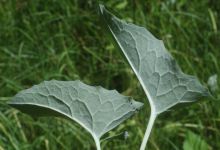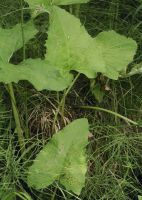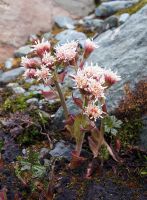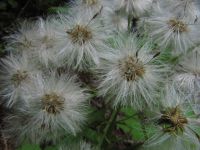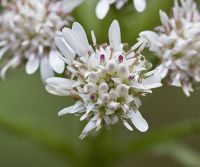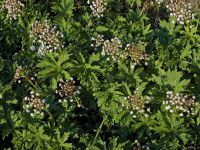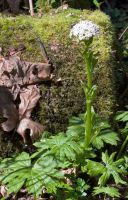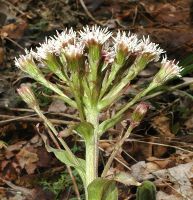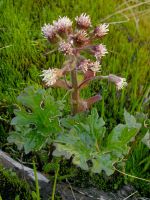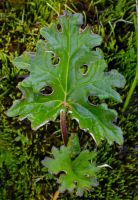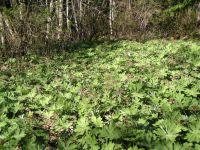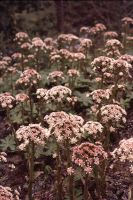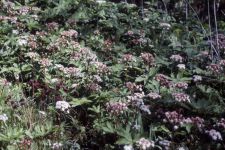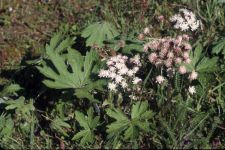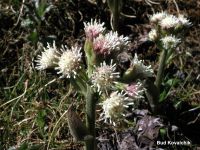Distribution: Occurring in forested and mountainous areas throughout Washington; Alaska to California, east across the northern half of North America to the Atlantic Coast; circumboreal.
Habitat: Meadows, swamps, and other wet places, from low elevations to the alpine.
Flowers: March-August
Origin: Native
Growth Duration: Perennial
Conservation Status: Not of concern
Pollination: Bees, flies, beetles, wasps
Perennial from a creeping rhizome, 1-5 dm. tall, sub-dioecious, the flowers appearing before or with the leaves.
Leaves all basal, large, long-petioled, palmately veined, up to 4 dm. wide and long, glabrous above and loosely white-woolly below, lobed or coarsely toothed or both; the stem with several parallel-veined bracts, 2.5-6 cm. long, reduced upward.
Heads several to many in a somewhat congested inflorescence; involucre 5-9 mm. high, the bracts equal and in a single series; flowers in the female heads pistillate and fertile, whitish and rayless, the corolla filiform; flowers in the males heads sterile, whitish, with short rays.
Publication: Summa Veg. Scand. 182. 1845.
-
var. frigidus – alpine butterbur, arctic butterbur, sweet coltsfoot
 Occurring in the Olympic and Cascades Mountains in Washington; Alaska to northern Oregon, east to Saskatchewan.
Occurring in the Olympic and Cascades Mountains in Washington; Alaska to northern Oregon, east to Saskatchewan. -
var. palmatus – western coltsfoot
 Occurring chiefly west of the Cascades crest in Washington, also in the Blue Mountains of southeast Washington; British Columbia to northeast Oregon, east across Canada to the Atlantic Coast.
Occurring chiefly west of the Cascades crest in Washington, also in the Blue Mountains of southeast Washington; British Columbia to northeast Oregon, east across Canada to the Atlantic Coast. -
var. sagittatus – arrowhead sweet coltsfoot, arrowleaf coltsfoot
 Occurring east of the Cascades crest along the northern border in Washington; Alaska to northeastern Washington, east to the northern Great Plains, Great Lakes region, and northeastern North America.
Occurring east of the Cascades crest along the northern border in Washington; Alaska to northeastern Washington, east to the northern Great Plains, Great Lakes region, and northeastern North America.
PNW Herbaria: Specimen records of Petasites frigidus in the Consortium of Pacific Northwest Herbaria database
WA Flora Checklist: Petasites frigidus checklist entry
OregonFlora: Petasites frigidus information
E-Flora BC: Petasites frigidus atlas page
CalPhotos: Petasites frigidus photos






